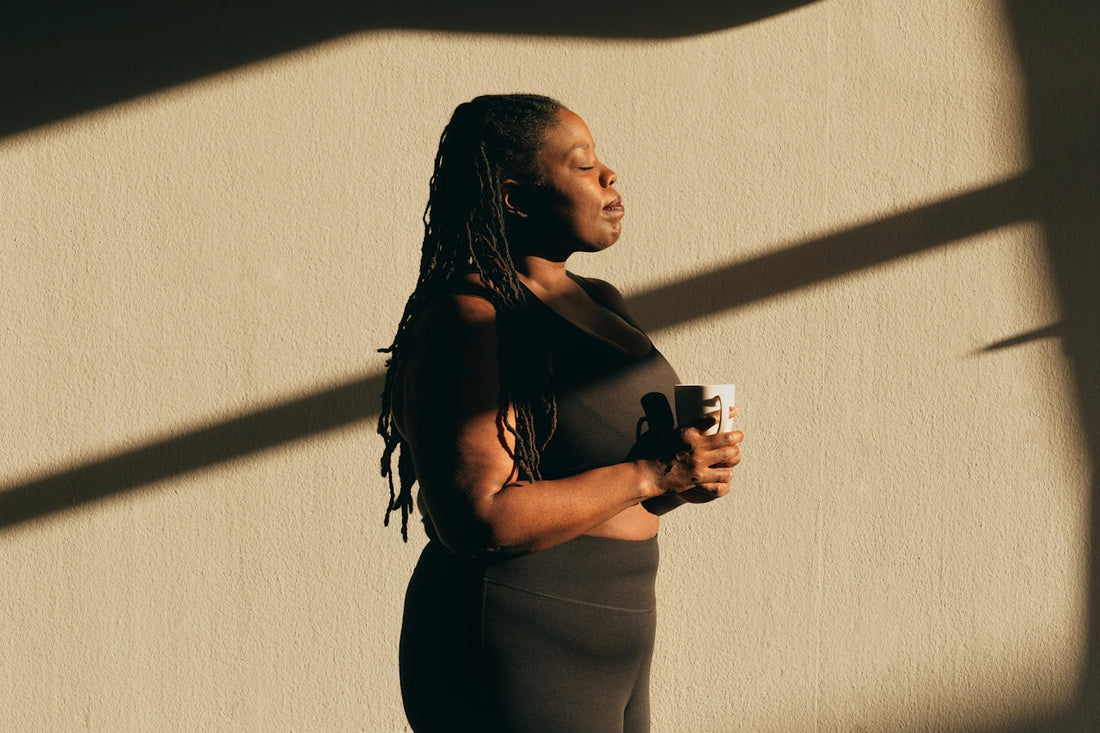
Light Hygiene: the simplest way to reset your body clock (and sleep better)
Your brain’s clock (your pineal gland), reads light to decide when to be alert and when to release melatonin. Morning daylight anchors the clock; evening darkness lets melatonin rise. Tweak light timing and intensity, and everything from energy to dream recall tends to improve.
What “light hygiene” means
Light hygiene is the intentional use of when, how much, and what kind of light you get across the day. It’s not biohacking, it’s biology. The pineal gland doesn’t need “activation”; it needs a clear day–night signal.
Morning: make it bright, quickly
-
Get outside within 60 minutes of waking. Even 1–2 minutes helps; 10 minutes is great; longer is a bonus.
-
Why outdoor > window: Outdoor light is dramatically brighter, even on grey days. That intensity tells your central clock, “It’s day!”, reducing grogginess and improving timing for cortisol (alertness) and melatonin (tonight’s sleep).
-
If you wake before sunrise: Use indoor light to function, then step outside once it’s light.
Habit stack: Wake → water → shoes → outside. Keep it effortless.
Midday: keep the signal going (without overdoing screens)
-
Natural daylight breaks (by a window or, better, outside) keep alertness steady.
-
Screens are fine in the day; what matters most is evening.
Evening: make it dim, early
-
Two hours before bed: Lower overheads, use lamps at or below eye level, and switch to warm/amber bulbs.
-
Screens: Add Night Shift/Blue Light filters and reduce brightness. Aim to finish intense, bright screen time 60 minutes before bed.
-
Why this matters: Bright, blue-rich light late at night pushes the clock later and suppresses melatonin. Dimming gives your pineal gland the “go” signal for night mode.
Bedroom: design for darkness
-
Blackout curtains, a tiny nightlight (warm, low, only if needed), and cover little LED dots.
-
Cool, quiet, clutter-light space. Your future self will thank you.
Weekends & “social jet lag”
Drifting your schedule by 2–3 hours on weekends confuses your clock. If you’re up late, still get morning light the next day to re-anchor.
Common obstacles (and fixes)
-
It’s dark/rainy in the morning: Still go outside; clouds scatter light well. If winters are very dim, consider a high-quality 10,000 lux light box for morning use, not at night.
-
I forget: Set a repeating phone reminder called “Morning Sun Minute.”
-
I work nights: Reverse the rules: use bright light at the start of your “day,” and block morning light when finishing (glasses/blackout) to help daytime sleep.
7-day starter plan
-
Mon–Wed: 2–5 mins outside within 1 hour of waking; dim house 60 mins before bed.
-
Thu–Fri: Extend morning to 5-10 mins; add warm bulb in bedroom.
-
Sat: Morning outdoor coffee or walk; “Dim at 9” with us.
-
Sun: Review: energy, sleep latency, wake time, dream recall. Tweak next week.
Safety notes
Light sensitivity, migraines, retinal conditions, or bipolar disorder? Speak to a clinician before changing light exposure. This is educational, not medical advice.
